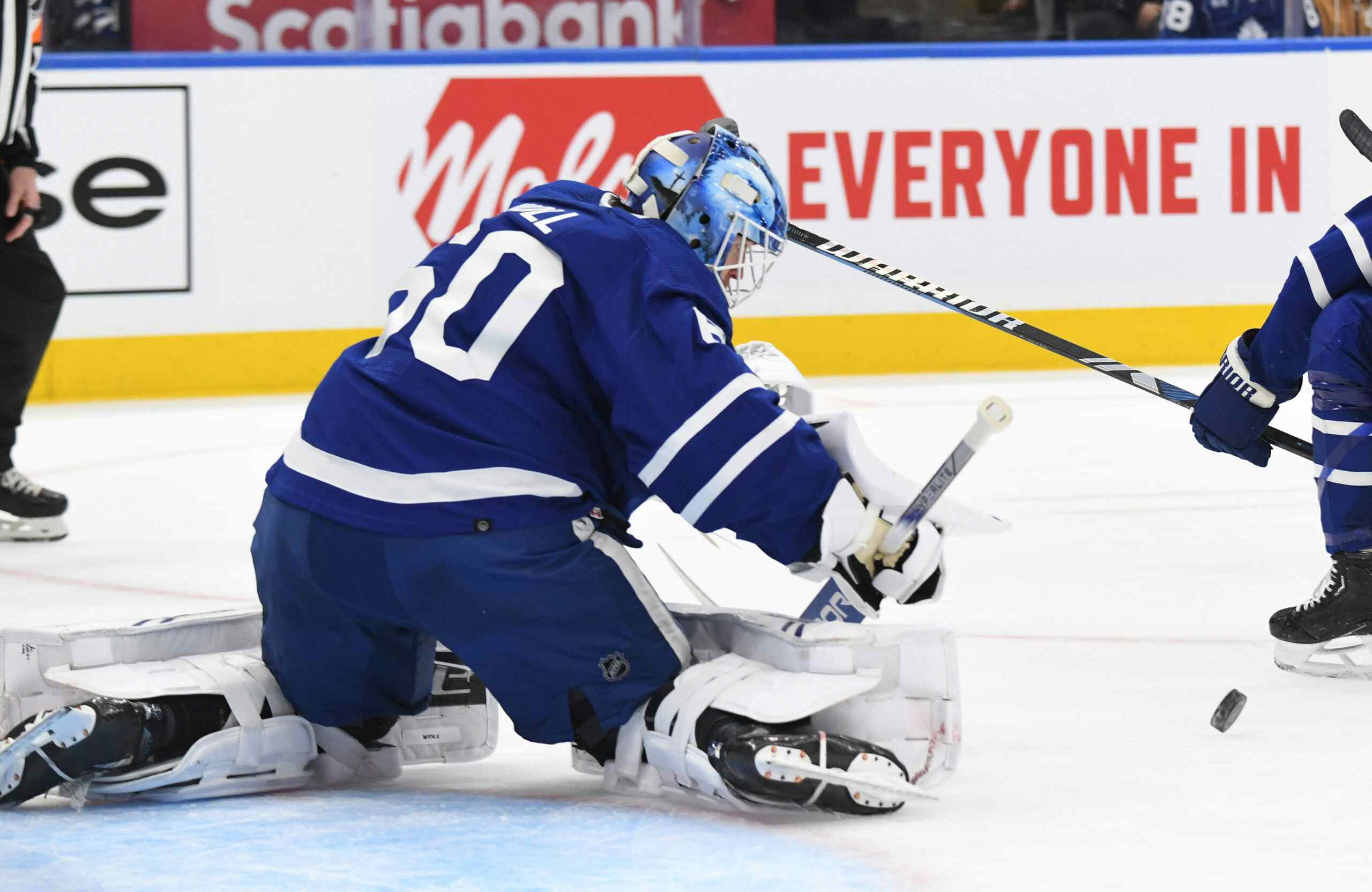A note on Mikhail Grabovski’s production
By Cam Charron
11 years ago
For the second time, a Toronto Star writer has completely ignored the fact that Mikhail Grabovski and Nikolai Kulemin play on a checking line—and almost exclusively in a checking role—when trying to analyze the scoring of those two players. In Boston, Kevin McGran tweeted out a poorly-formed thought indicating that Grabovski was invisble, a period before Grabovski and Jay McClement hooked up for the 3-2 goal that brought the Maple Leafs back into the game.
Grabovski in that game took six of his 11 draws against Patrice Bergeron. Media members can accept that Randy Carlyle plays a hard matching style, where he likes to pair up a centreman against a centreman for the course of the game. Grabovski, Toronto’s best two-way player, along with Nik Kulemin and Jay McClement frequently get the opposition’s top line, even on the road.
Left Wing Lock shows that Grabovski played 59.18% of that March 7 game against the Bruins top line of Brad Marchand, Patrice Bergeron and Tyler Seguin. The NHL Event Summary shows that Grabovski played in total 14:22. That means that Grabovski played 8:30 of time against Bergeron & Co. According to the timeonice.com Corsi page, the Leafs were +1 in shot attempt differential with Grabovski on the ice, and the Bruins were +8 with Bergeron on the ice. That means that away from the matchup, whoever drew Bergeron got absolutely killed in the matchup. In fact, according to Robert P of Jewels from the Crown who was kind enough to run the numbers for me, Bergeron was held in check when Grabovski was on the ice, considering the amount of minutes played: just eight on-ice shot attempts in those 8 minutes, while he ran roughshod in limited minutes against other lines.
Witness the enduring invisibility of Nikolai Kulemin and Mikhail Grabovski, another pair of Burke signings currently failing to pull their weight as alleged second-line forwards.Kulemin has two goals in 26 games. And as for Grabovski — the Maple Leafs are 12 games into their 24-game home schedule, and Grabovski has precisely one goal and zero assists at the Air Canada Centre this year. Maybe that’d be fine if he was a bit player. But a year ago this month Burke made him the highest-paid forward on the team, complete with a $5.5-million cap hit that doesn’t abate until after 2016-17.
For two reasons, the USING NUMBERS TO PROVE ANYTHING red light pops up in my head. Why would it matter whether Mikhail Grabovski can’t score at home, if he’s scoring on the road? Mikhail Grabovski has 11 points, which isn’t a whole lot, but consider:
- He starts shifts nearly exclusively in the defensive zone
- He spends most of his time trying to stifle the opposition’s top line
- He out-produces similar NHLers in the same role
- He is 7th on the Leafs forward corps in powerplay time with 1:45 per game.
- Mike Fisher (4G, 6A)
- Paul Stastny (7G, 9A)
- Mikhail Grabovski (6G, 5A)
- Maxime Talbot (2G, 5A)
It’s worth noting that Grabovski faces the highest quality of competition rank in the league, but has similar production to his peers who have similar heavy-lifting roles. Stastny makes $6.6-million and Mike Fisher makes $4.2M. Max Talbot makes $1.75M.
Looking at it that way, Grabovski’s salary is pretty much right in line (higher than Fisher’s, lower than Stastny’s) given his offensive output for the situations he’s put into.
There’s nothing really “advanced” about advanced stats. It’s not mathematical wizardry that we’re doing here. Most of “advanced” stats is simply looking at two numbers and figuring out which one is higher. For defensive zone start rate, you just look at the number of times a player starts in the defensive zone, and divide it by the number of times he started a shift excluding neutral zone faceoffs. It’s just division, and there’s no calculus or spreadsheets require.
This isn’t “using numbers to prove anything”. This is simply using numbers so we can better look at player roles. There’s a lot of useless information out there, but ice time numbers published by the NHL are pretty reliable and tell us who was on the ice against who, and how much. Shot totals tell us at which end of the ice the game took place at. Corsi Rel QoC is a fancy way of saying “quality of competition” and adding up the average shot differential number of a player’s opponent. There’s nothing wrong with looking to quantify things when we look to better argue a point. Not a single person in hockey would tell you it’s better to play with the puck in your own end of the ice.
What the Feschuk column does show is that the Leafs are probably mis-using Grabovski and supressing his offensive talents. Grabovski has been one of the leaders on the Leafs in even strength scoring over the last two seasons,
Anyway, addition and subtraction are not difficult concepts. Especially over at the Star, where thanks to overpaid, tenured hockey columnists half-assing columns, the publisher had to subtract 55. That’s not fancy math either.
Recent articles from Cam Charron





